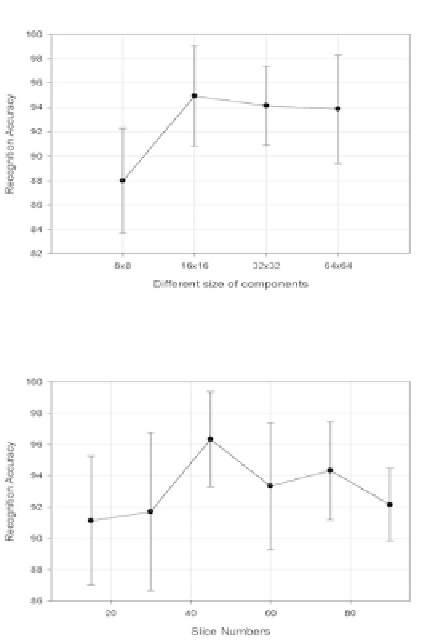Information Technology Reference
In-Depth Information
Fig. 4.
Performance comparison (%) with features from different size of components
Fig. 5.
Performance comparison (%) using AdaBoost on different slice numbers with multi-
classifier fusion (using median rule)
classifiers, i.e. three support vector machines (SVM) based on linear kernel, gaussian
kernel and poly kernel, a boosting classifier (Boosting) and a Fisher linear discriminant
classifier (FLD) were chosen as individual classifiers. These classifiers performed better
in our experiments than a Bayesian classifier and k-nearest neighbor classifier.
For boosting the performance of each individual classifier, three decision rules, i.e.
median rule, mean rule, and product rule, are investigated for multi-classifier fusion.
The average accuracies are
for the mean, median and
product rule, respectively. Comparing with Fig. 4, the performance of multi-classifier
fusion is increased by
94
.
39%
,
95
.
19%
,and
94
.
39%
when using the median rule, while the two other rules
cannot boost the performance of individual classifiers for this dataset.
Fig. 5 lists the results for feature selection by AdaBoost on different number of slices
with multi-classifier fusion (using median rule). It can be observed that the average
performance gets the best rate (
0
.
27%
) with 45 slices.
Table 1 compares our methods: CSF, CSF with
m
ulti-
c
lassifier fusion (CSFMC),
B
oosted CSF with
m
ulti-
c
lassifier fusion (BCSFMC), and some other methods, pro-
viding the overall results obtained with Cohn-Kanade Database in terms of the number
of people (PN), the number of sequences (SN), expression classes (CN), with different
96
.
32%








Search WWH ::

Custom Search